
Switzerland continues to bet on geothermal energy
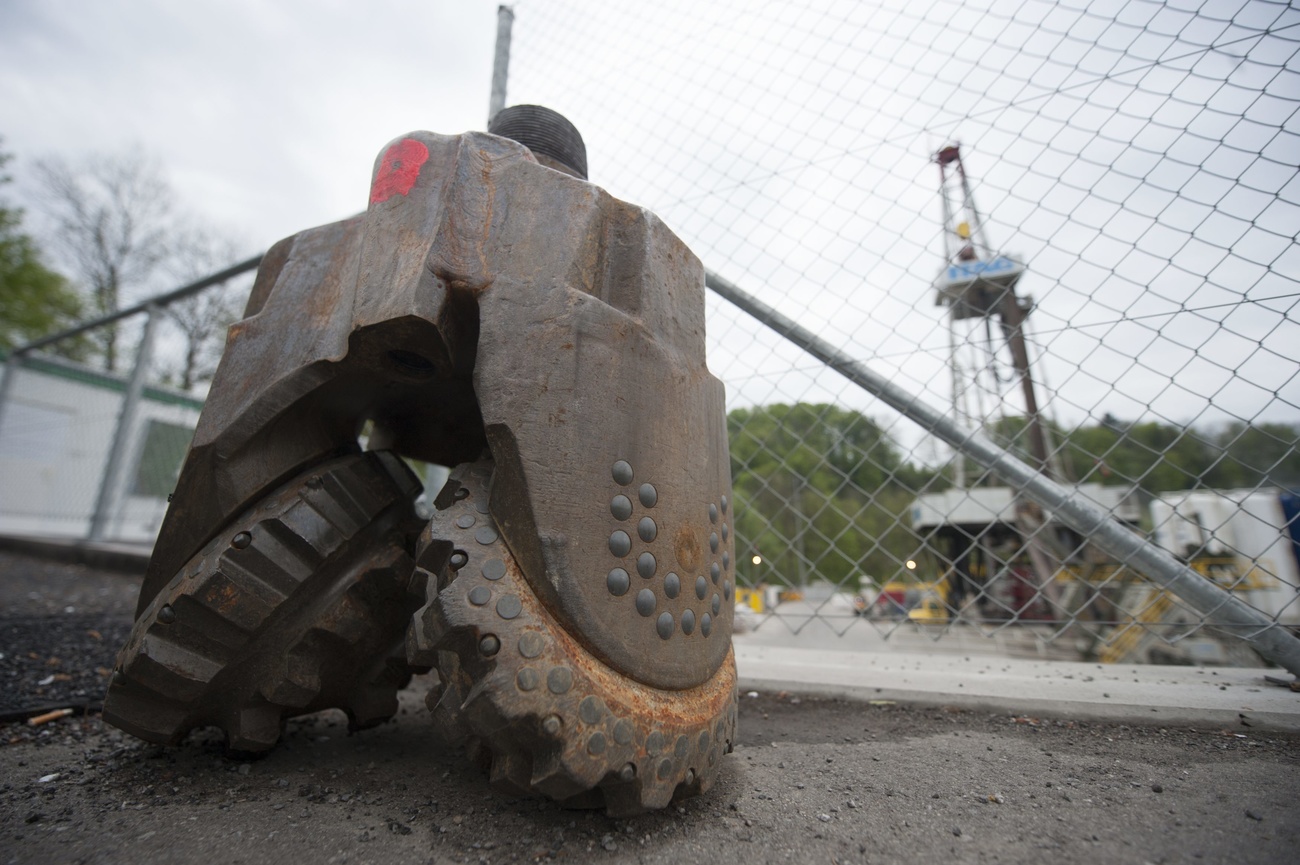
Can energy sourced underground help the small Alpine nation meet its ambitious energy and climate goals? Despite concerns over deep drilling triggering earthquakes, Swiss cantons and cities are pushing ahead with a range of new geothermal projects.
At the ultra-modern Lancy-Bachet station in central Geneva, passengers wait for the next Léman Express cross-border regional train. Dim lights loom and the carriages slow to a halt. Unbeknownst to travellers, the heat generated by the train and its screeching brakes is being captured under the rails and in the tunnel walls and will be used to heat and cool nearby apartments and offices.
The system – currently a pilot project – works thanks to polyethylene pipes filled with heat transfer fluid that are embedded in a 100-metre section of the new tunnel. This energy source is connected to a heat pump that can produce heat and cold, which is injected into the district heating network.
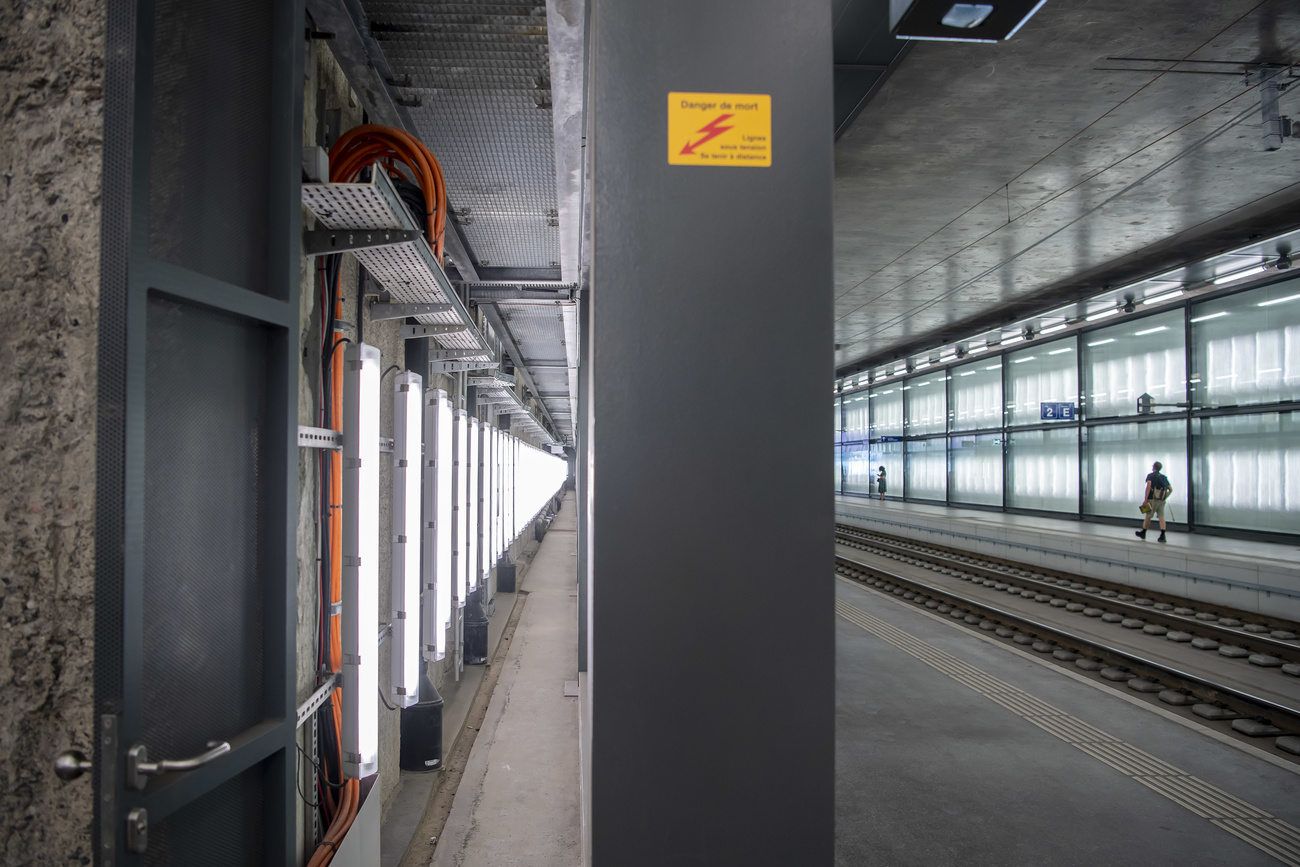
It’s one of several innovative geothermal projects popping up across Switzerland to help meet ambitious energy and climate goals. In Geneva the government wants new buildings to run 80% on renewable energies in the future. And by 2035, 20% of the canton’s heating needs should come from geothermal sources.
The Lancy-Bachet project – a Swiss first – joins pioneering schemes like Genilac – a thermal exchange project that uses water from Lake Geneva to cool and heat buildings – and Geneva’s contribution to the European underground thermal energy storage project, HeatStore. BernExternal link and ZurichExternal link have similar storage schemes.
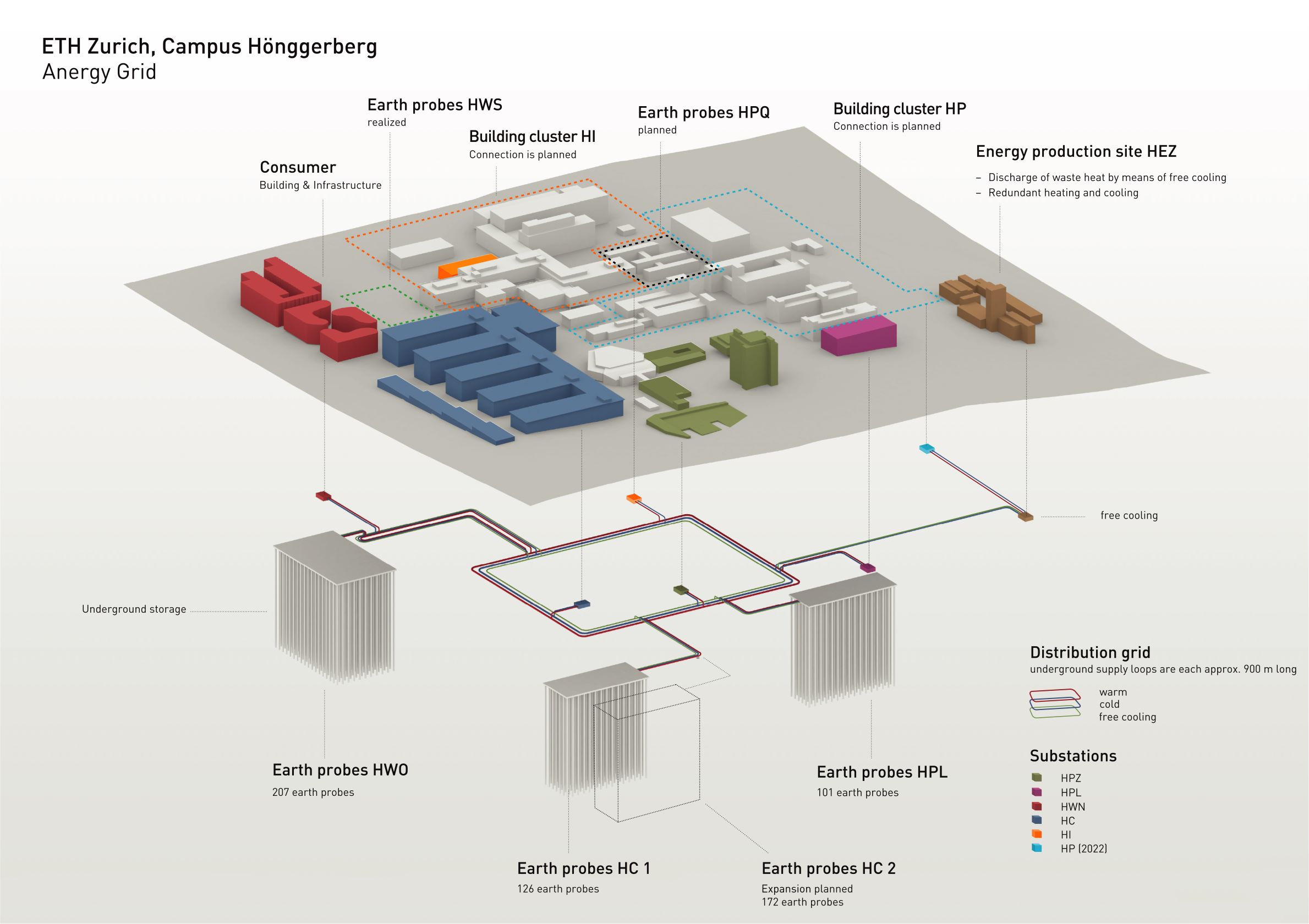
Geneva is also continuing to prospect underground for geothermal energy. The federal authorities recently handed over CHF27.5 million ($30.4 million) to fund drilling. Part of the money is being used at the Lully test site, where engineers have drilled 1,456 metres below the earth’s surface. The hot water that bubbles up is 53 degrees Celsius and at a promising pressure, but it has a weak flow rate, say experts – which means it’s not hot or forceful enough to produce electricity, but can be used to heat buildings.
Geneva is extremely forward-thinking when it comes to thermal energy, according to Gunter Siddiqi, a researcher at the Federal Office of Energy.
“It’s a relatively small, well-integrated urban canton with good relations with the energy and utility company that services the canton. You have a combination of political will, business nous and research and innovation expertise,” he told swissinfo.ch, noting that every canton’s conditions are different and it is unclear whether the Geneva model can be replicated elsewhere in Switzerland.
Geothermal heat – a fossil fuel alternative
Currently, geothermal activities are limited to extracting and stocking thermal energy mainly with vertical ground heat exchangers, groundwater wells, geothermal structures and hot tunnels. These are normally used in combination with a heat pump for heating – and in some cases, cooling – purposes.
Across Switzerland almost 15% of Swiss heating systems in homes, offices and other buildings use such geothermal heat pumps. In 2019, the Federal Energy Office registered 102,000 underground probes in use, representing the “highest concentration per square kilometre in the world”.
Eight locations also make direct use of hot underground water, such as thermal baths at Kreuzlingen, Lavey-les-Bains, Schinznach-Bad and Bassersdorf, buildings and hotels at Weissbad, Weggis and Zurich, and a neighourhood at Riehen.
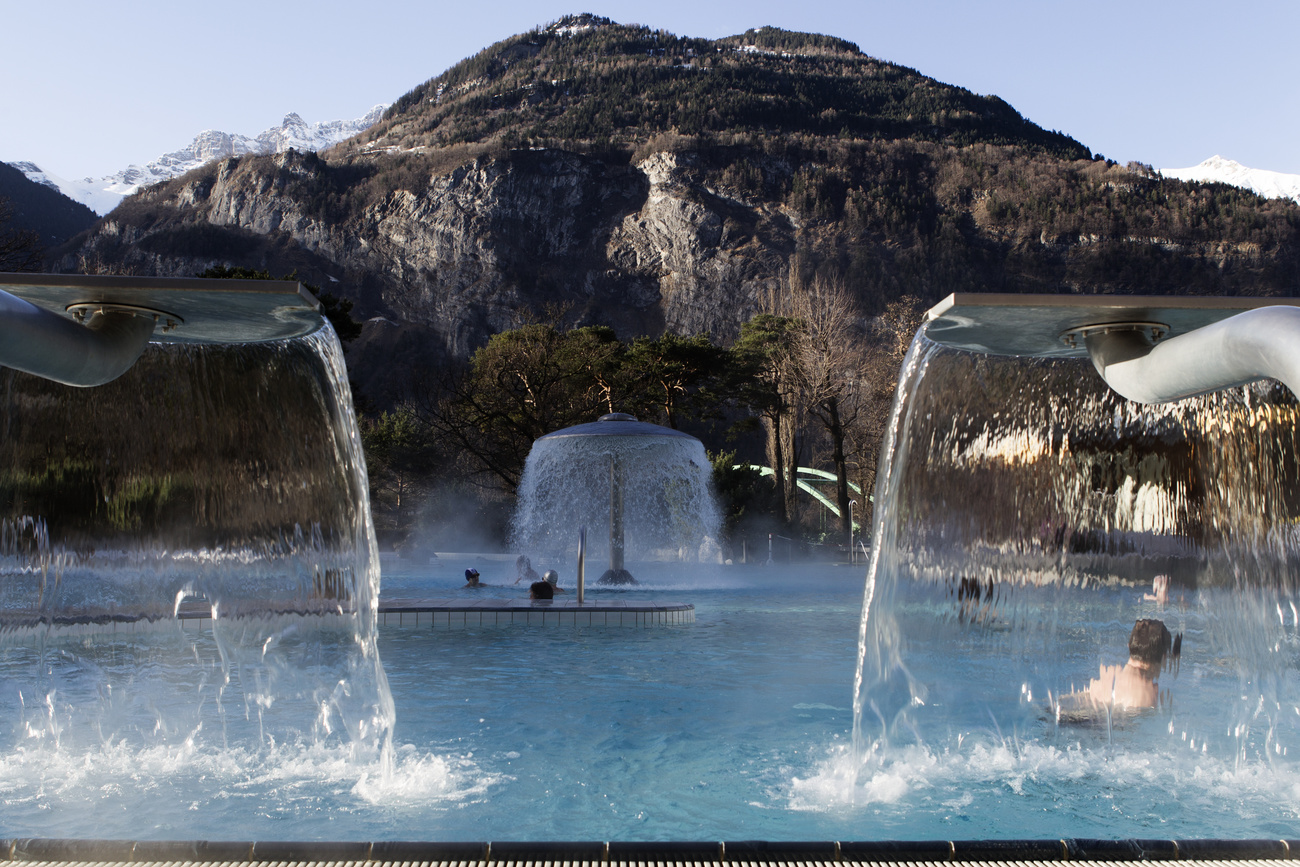
Together, this low-depth geothermal heat production accounts for only 1.3% of the country’s heating needs. But the technologies are well established, and the federal authorities, under the Energy Strategy 2050, are convinced of their advantages and potential.
Elmar Grosse Ruse, a climate expert at WWF Switzerland, is optimistic about their further growth.
“We are committed to getting rid of fossil fuels, oil and gas, for heating in the next two decades and this will only be possible if we use a lot of heat pumps in densely populated areas,” he said.
Siddiqi also expects wider use of such technologies in the years ahead. He said underground probes could be staggered over greater depths. But he insisted that safe distances (10-12 metres) must be kept between them to avoid a “scavenging effect” between systems hunting for underground heat.
Geothermal energy is part of the group of “new” renewable energy sources alongside solar, wood, biomass and wind which are playing an increasingly important role in energy production. Hydropower remains Switzerland’s most important source of renewable energy (57% of domestic electricity). Switzerland has several medium-depth and deep geothermal energy projects underway:
• Hydrothermal system: AGEPP in Lavey-les Bains (canton Vaud), Plaines-du-Loup (Vaud), EnergeÔ La Côte (Vaud), GEothermies (Geneva), Riehen (Basel)
• Petrothermal / Enhanced Geothermal System: Haute-Sorne (Jura), Avenches (Vaud), Etzwilen (Thurgau), Pfaffnau and Triengen (Lucerne).
Geothermal electricity – setbacks
But when it comes to electricity, none is currently being produced from geothermal sources in Switzerland. The United States currently leads the world in geothermal electricity generation, with the state of California covering about 5% of its electricity needs in this way, and all of Switzerland’s neighbouring countries produce geothermal power.
The Swiss Federal Office of Energy remains bullish that Switzerland will soon follow suit. It estimates that by 2050, 7% of national electricity consumption will be covered by geothermal energy.
To get there, a geothermal power station would need to extract water at over 100 degrees Celsius from 3,000-4,000 metres below the surface using advanced techniques. But scientists know little about the local geological conditions deep below Swiss territory and the exploratory phase of geothermal projects is expensive.
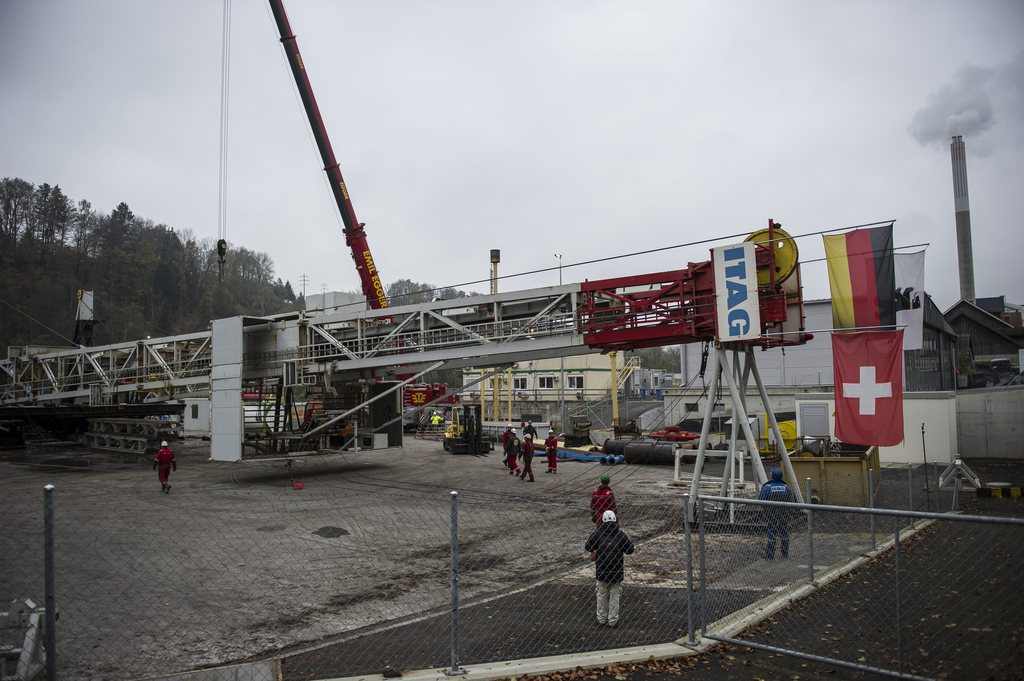
More
St Gallen geothermal power project abandoned
Several deep drilling projects that have been launched have faced setbacks. In 2006 and 2013, teams in Basel and St Gallen injected a pressurised liquid into hot, dry, impermeable rock deep underground to create an artificial geothermal reservoir in a process known as Enhanced Geothermal Systems (EGS). But when the stimulations triggered minor earthquakes, the plans had to be abandoned.
New deep initiatives
Today, new test initiatives are underway in different Swiss regions, prospecting deep underground for energy sources.
One such project at Haute-Sorne in canton Jura made headlines in April, when the cantonal government announced its wish to revoke its authorisation. The move, which came amid local concerns over risks, has caused widespread consternation among geothermal energy advocates and from the Swiss government.
“The termination of this project would be a severe blow to other geothermal power plant projects in Switzerland and would send a bad signal, particularly to investors interested in other locations,” declaredExternal link the Federal Council this month.
Siddiqi admits that Switzerland is behind compared to other countries when it comes to geothermal electricity production and knowledge of where to find the best sources. But he feels the country has no choice but to continue to prospect and invest in such projects to meet its renewable energy goals.
“The payoff will come in 20-30 years,” he estimates.
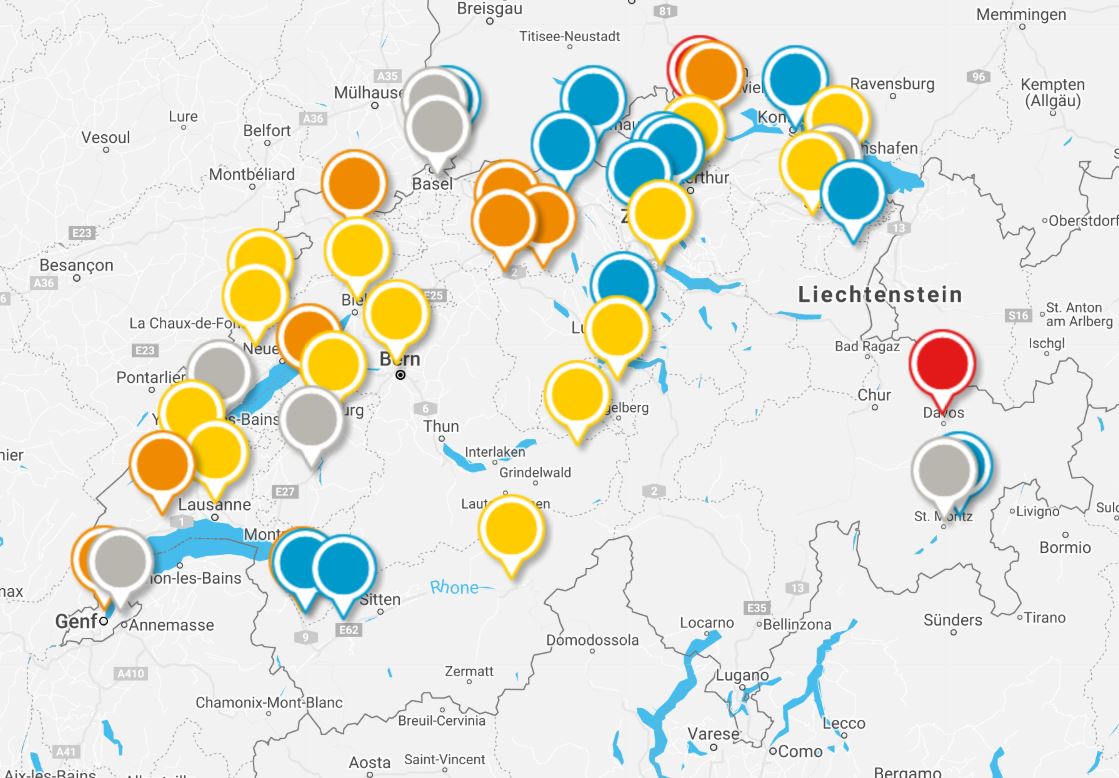
The conference External linkin Winterthur, Switzerland, on September 1-2 brings together some 1,000 participants from business, politics, administrations, science and civil society to discuss issues such as smart cities, energy, the climate and sustainability. swissinfo.ch will be present as media partner of the event.

In compliance with the JTI standards
More: SWI swissinfo.ch certified by the Journalism Trust Initiative































Join the conversation!